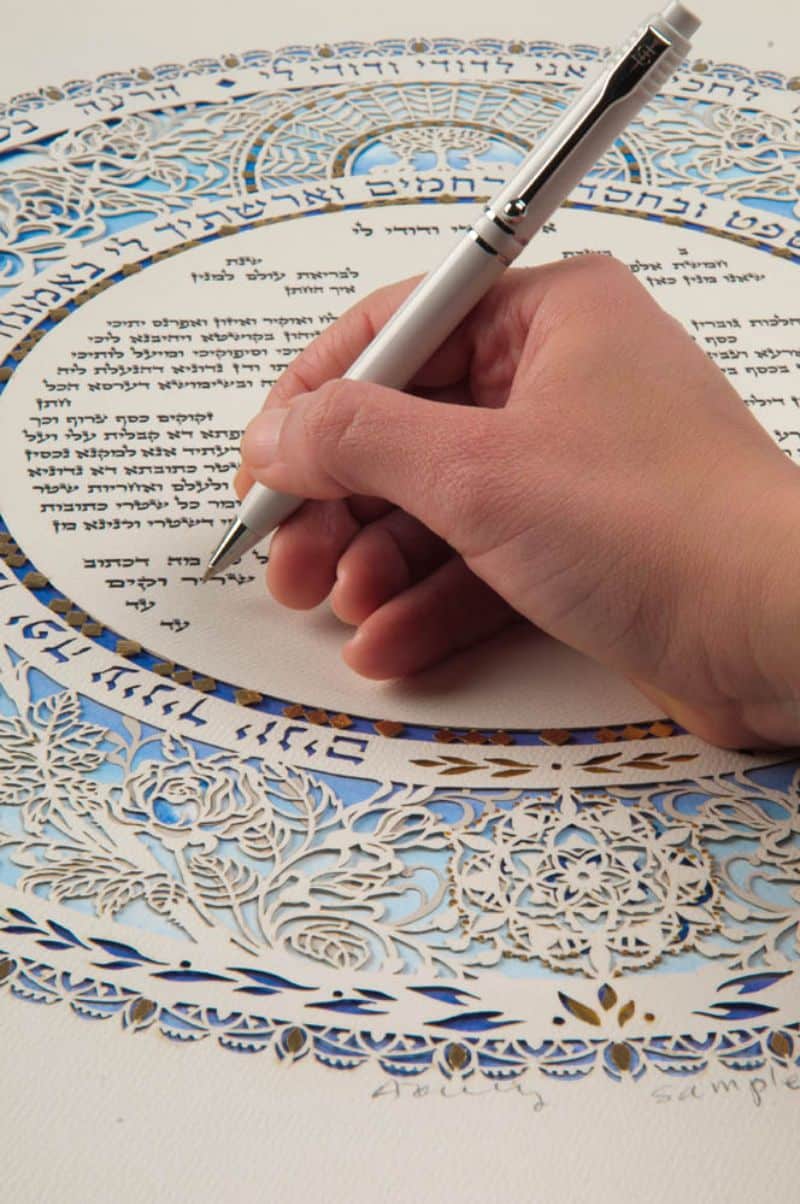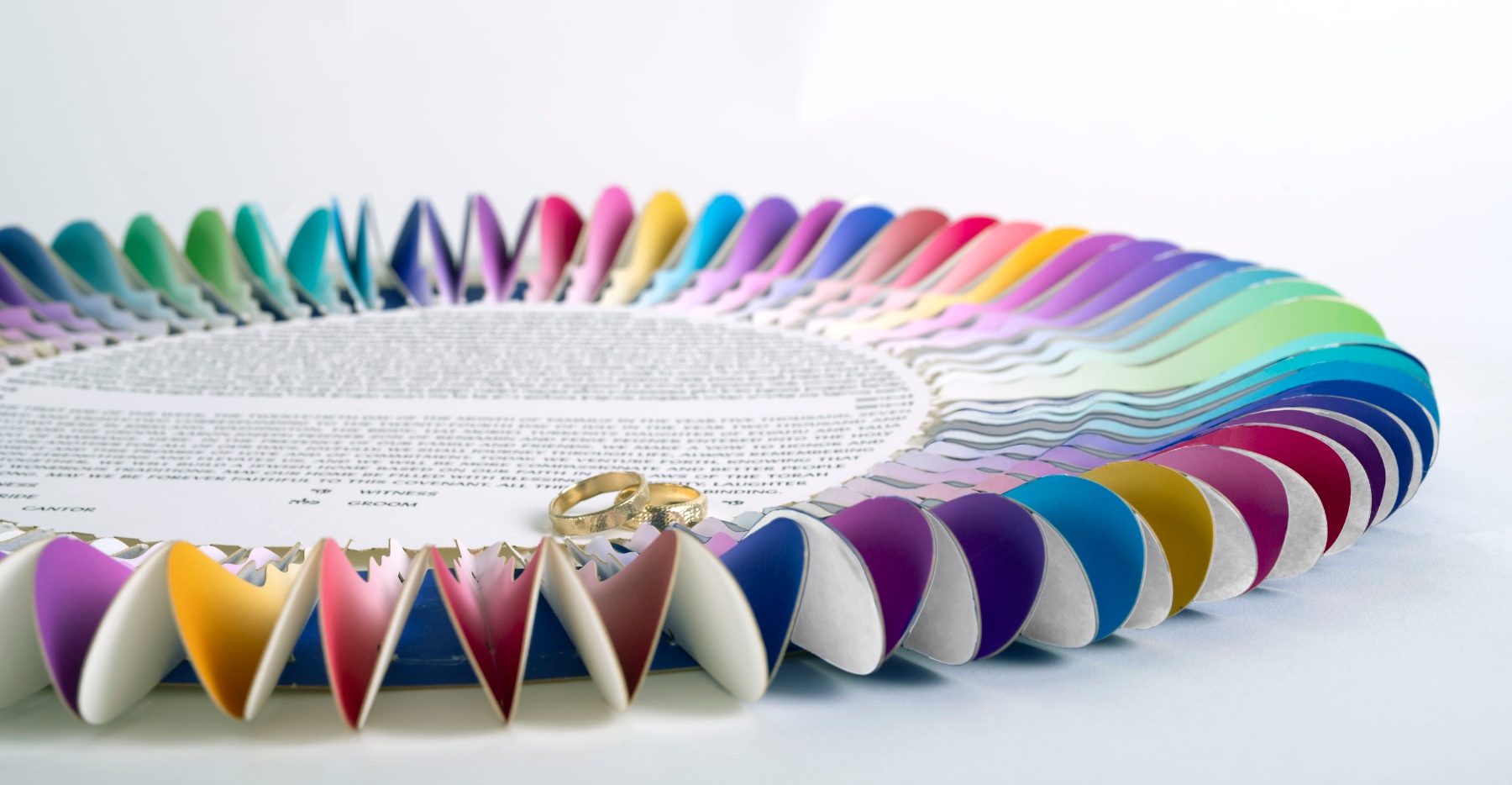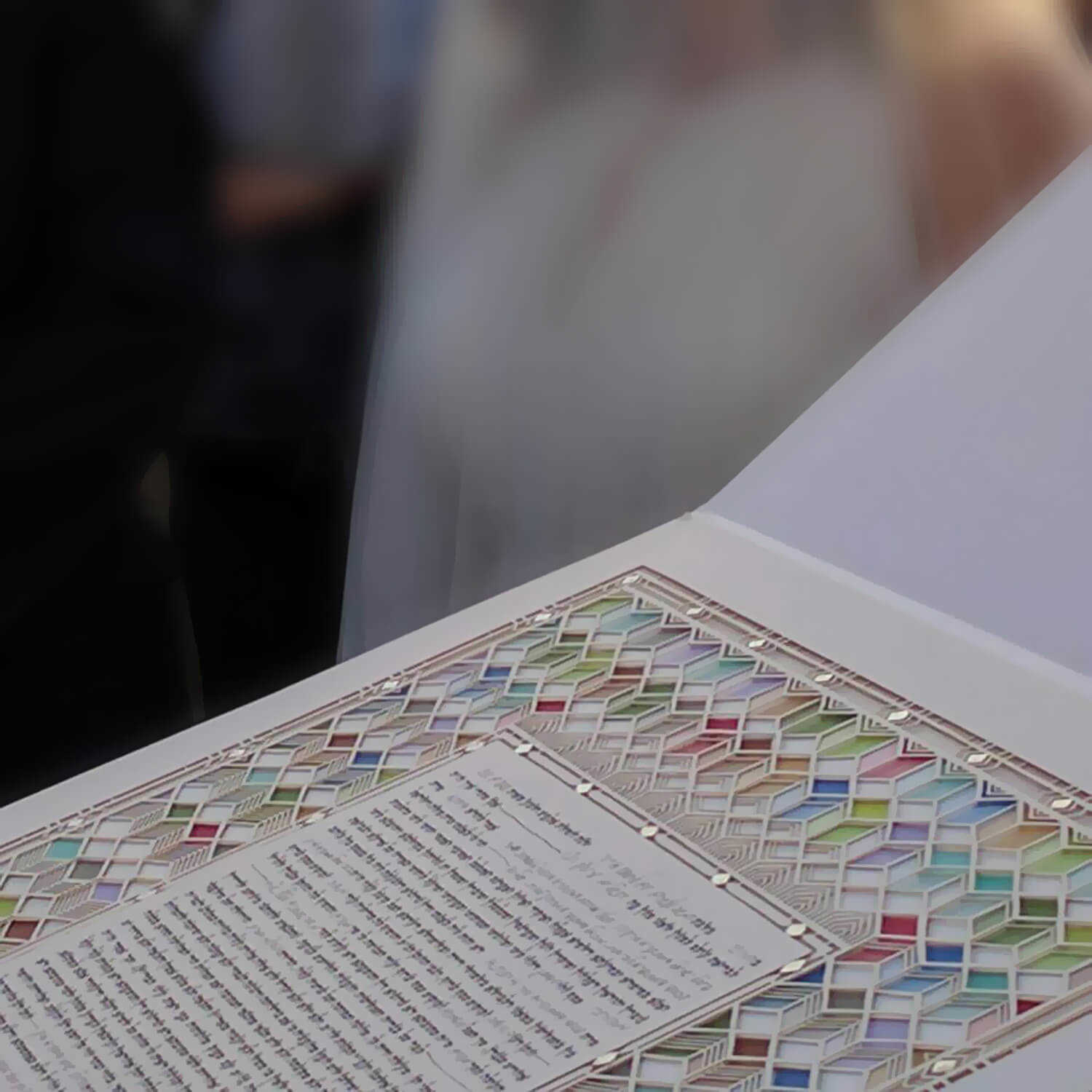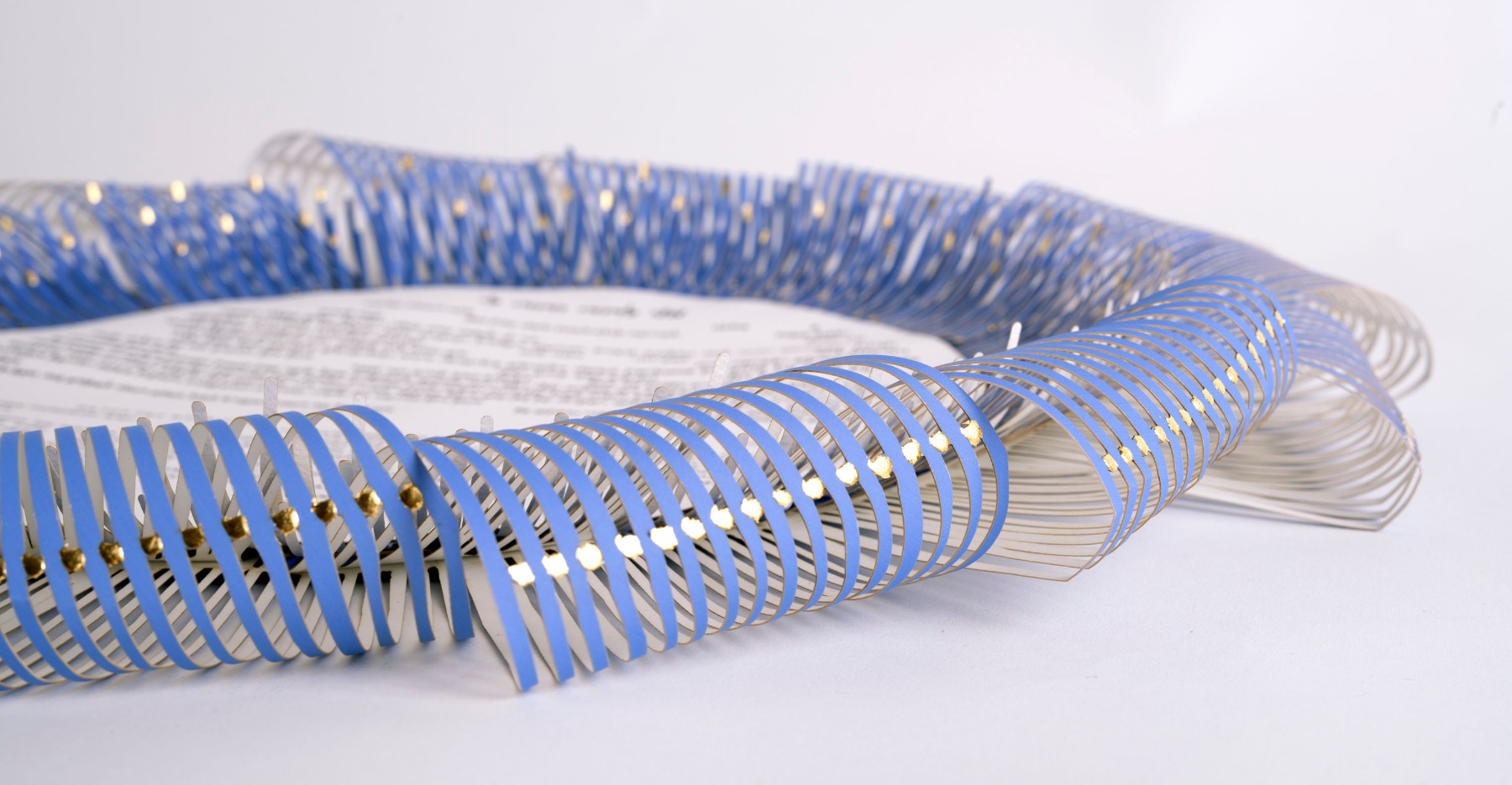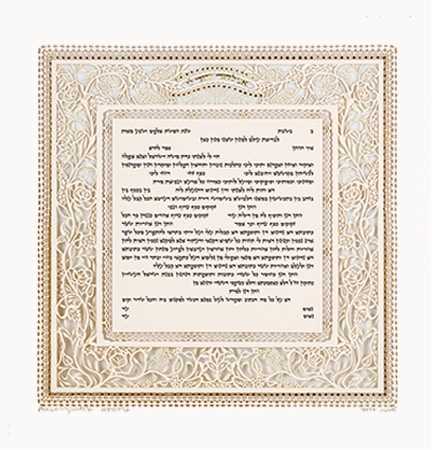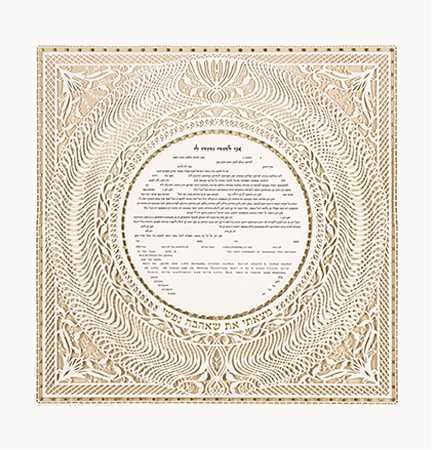The orthodox ketubah: beautiful art and a legally-binding contract rolled in to one
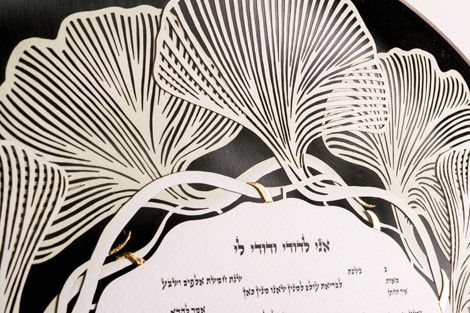
Orthodox Ketubah: the Synergy of Tradition and Art
Prenuptial agreements are a standard legal contract between two parties as they prepare to enter into the bonds of marriage. But did you know that an orthodox ketubah is probably the first manifestation of this type of agreement?
We all know the ketubah is a Jewish marriage contract deeply rooted in ancient tradition. Its guiding principles are remarkably similar to modern prenuptial agreements, especially in an orthodox ketubah.
But what is the difference between an orthodox and a reform (non-traditional) ketubah? Aren’t they the same?
The answer is—yes and no. Orthodox and contemporary ketubot are similar in the sense that they may share some common language. However, while the ketubah’s traditional purpose is the same no matter how it’s designed, it’s the rules around the document’s creation and execution that set it apart.
Just as there are different sects and factions of Judaism, there are distinct ketubahs that align with those principles and values. An orthodox ketubah is perhaps the most traditional of all, as it has not changed significantly since the practice was implemented more than 2,500 years ago.
Because the language used is Aramaic, the Jewish legal language dating back to Talmudic times, deciphering an orthodox ketubah may be challenging to anyone besides a Hebrew scholar or Rabbi. The kosher rules around orthodox ketubahs are strict, but the document’s meaning remains steadfast.
The Orthodox Ketubah: a Legally Binding Jewish Marriage Contract
The ketubah is a Jewish marriage contract and an ancient wedding tradition dating back to the fifth century BCE. The document outlines the groom’s responsibilities to provide for his wife in various ways, like shelter, food, clothing, and conjugal relations. The purpose of the contract is to outline the groom’s obligations before entering into the marriage. It is witnessed by two people to make it official, which must occur before the wedding ceremony.
Though traditional ketubah texts generally outline the same legal points, modern ketubahs have evolved to allow English. Couples may choose a traditional ketubah text and then modify it to reflect their individual values and aspirations for their life together. Some couples may even write the text themselves, much like non-Jewish couples sometimes choose to write their own wedding vows.
Orthodox ketubot differs from modern versions of the document as they must follow strict kosher rules. From an orthodox standpoint, if a ketubah does not contain precise details about the bride’s dowry, the groom’s financial and personal responsibilities during the marriage, and what he is obligated to pay as a settlement should they divorce, it is not a ketubah, and this is where the division lies.

The Groom’s Financial Obligations
An orthodox ketubah contains details that are quite similar to any marriage-related legal document—hence the comparison to a prenuptial agreement.
The ketubah text will first include the couple’s names, the date, and the location where the contract was signed. Details regarding the dowry brought into the marriage, and the groom’s financial and practical obligations follow, outlining the specifics of each point.
The groom also agrees to an amount he or his estate promises to pay in case of divorce or death. Ultimately, the orthodox ketubah is all about the groom. A wife’s promises to her husband do not enter into this agreement. However, the bride’s receipt of the signed and witnessed document indicates she agrees to the terms set out therein. In any case, she must agree to and accept the union of her own free will.
The ketubah’s primary purpose is as a bill of rights for the bride and is meant to protect her against financial hardship. Following the Orthodox wedding ceremony, the ketubah is given to the bride for her safekeeping.
The Kosher Ketubah
Orthodox ketubahs are legal documents, and, as such, they cannot be altered. Many of the rules around creating an orthodox ketubah refer to these requirements. The text is neither scripture nor prayer and does not mention religious matters. Instead, it is a legal script written according to Talmudic law.
Another requirement of orthodox ketubahs is that they cannot be altered in any way. The ink used to write the ketubah text and numerals cannot be erasable. The names of the bride and groom must be precisely and legibly written, and the text must be written so there is no space on the document for anyone to add any wording after the fact.
Finally, the two witnesses who sign the document must abide by kosher requirements. Both must be male, and neither can be biologically related to the bride or groom. Witnesses must also be Shabbat observant.
By signing their names, the witnesses are stating they have read the contract and witnessed the groom handing it to his bride. When this process is complete, and the bride accepts the ketubah, the understanding is that the bride and groom agree to the contract terms.
Once the couple is married, the ketubah can be displayed or not—but it must be kept safe as with any legal document.
The Art of Creating an Orthodox Ketubah
Though the orthodox ketubah is a binding legal contract, the document can be an exquisite work of art. This, again, hearkens back to ancient times and celebrates a time-honored tradition of hand-lettered calligraphy and paper art.
The care that goes into each handmade ketubah elevates the document beyond its practical purposes, and many couples proudly display it in their homes for all to admire. As one of the most noteworthy events in a Jewish couple’s life, an orthodox ketubah represents and celebrates the hopes and aspirations of the couple and the abiding endurance of the Jewish people.
Today, the legacy of creating beautiful handmade ketubahs lives on. Despite all the changes society has endured through the years, the orthodox ketubah text remains as it was.
Danny Azoulay is known for his exquisite papercut ketubahs, interfusing traditional Jewish motifs with a fresh expression. Explore the collection today.

